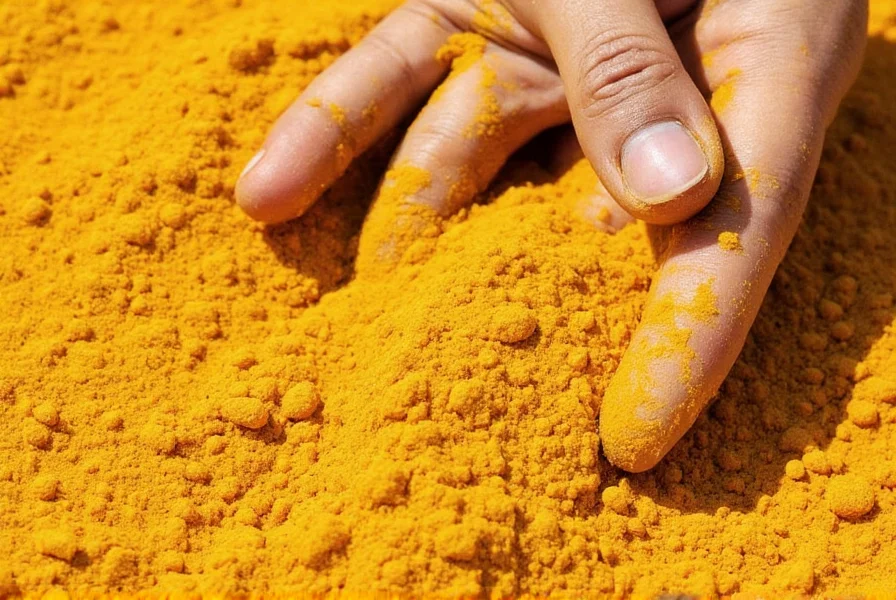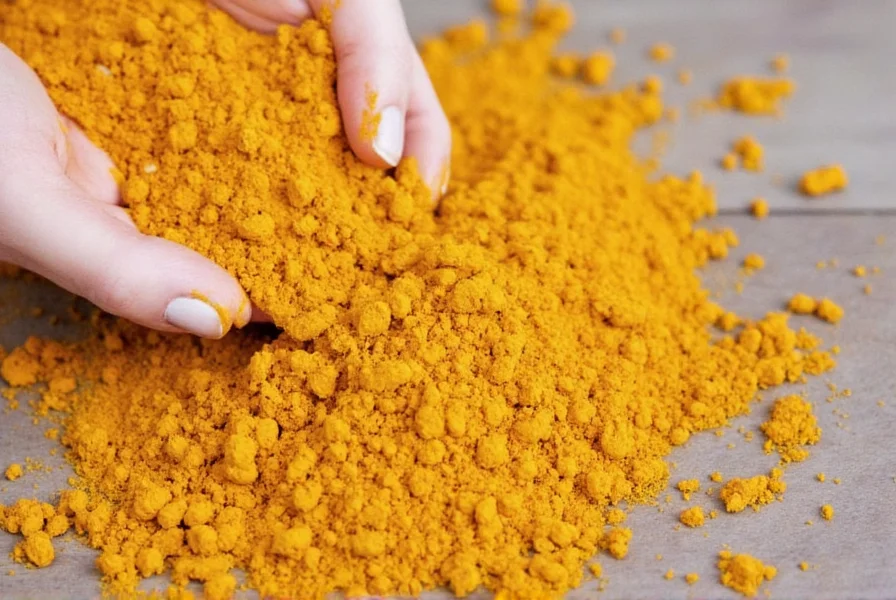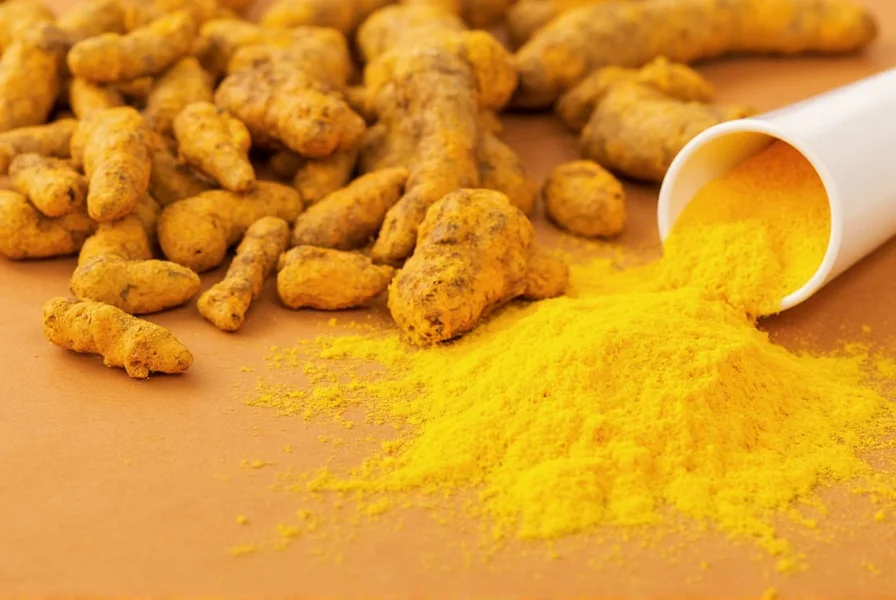For centuries, traditional medicine systems have utilized turmeric for pain relief, but modern science now provides evidence-based insights into its effectiveness. This comprehensive review examines what current research reveals about turmeric for pain management, separating fact from folklore while providing practical guidance for those considering this natural approach.
The Science Behind Turmeric's Pain-Relieving Properties
Curcumin, turmeric's primary bioactive compound, works through multiple mechanisms to address pain at its source. Unlike conventional painkillers that primarily mask symptoms, curcumin targets inflammation pathways including NF-kB, COX-2, and inflammatory cytokines. A 2022 meta-analysis in Phytotherapy Research confirmed curcumin's ability to significantly reduce inflammatory markers like C-reactive protein and interleukin-6, which directly contribute to pain sensation in conditions like arthritis.
However, curcumin's notoriously poor bioavailability presents a major challenge. Standard turmeric powder contains only 2-8% curcumin, and what's absorbed gets rapidly metabolized. This explains why many people report no benefits from culinary turmeric alone. Modern formulations address this through:
- Liposomal delivery systems
- Piperine (black pepper extract) combinations
- Phospholipid complexes
- Nanoparticle technologies

Clinical Evidence for Specific Pain Conditions
Research shows varying effectiveness of turmeric for pain management depending on the specific condition:
| Pain Condition | Research Findings | Recommended Dosage |
|---|---|---|
| Osteoarthritis | 59% pain reduction in knee OA patients after 12 weeks (vs 50% for ibuprofen) in Journal of Medicinal Food study | 500mg standardized curcumin 2-3x daily |
| Rheumatoid Arthritis | Significant improvement in DAS-28 scores and reduced morning stiffness per Phytotherapy Research | 500mg curcumin-phospholipid complex 2x daily |
| Post-Exercise Muscle Soreness | 39% reduction in DOMS symptoms in athletes taking curcumin vs placebo (Journal of the International Society of Sports Nutrition) | 400mg curcumin-piperine 2x daily starting 48h pre-exercise |
Practical Guidance for Effective Pain Management
When incorporating turmeric for pain relief, proper usage makes all the difference. Research indicates that consistent daily intake for at least 4-6 weeks is necessary before significant pain reduction occurs. Unlike NSAIDs that provide immediate but temporary relief, turmeric works cumulatively by addressing underlying inflammation.
For optimal results with turmeric supplements for arthritis pain, look for products containing:
- At least 95% standardized curcuminoids
- Bioavailability enhancers (piperine, phospholipids, or nanoparticles)
- Third-party testing verification (USP, NSF, or ConsumerLab)
Many people wonder how long does turmeric take to reduce pain. Clinical trials typically show measurable improvements after 2-4 weeks, with maximum benefits appearing around 8-12 weeks of consistent use. Patience is essential, as this isn't a quick fix but rather a gradual reduction in inflammation.

Safety Considerations and Limitations
While generally safe, turmeric for pain management has important limitations. High-quality research shows it's typically 20-30% less effective than NSAIDs for acute pain relief, making it better suited as a complementary approach rather than complete replacement for severe pain.
Those considering natural pain management with turmeric should be aware of potential interactions:
- May enhance blood-thinning medications (warfarin, aspirin)
- Possible interference with diabetes medications
- Contraindicated for those with gallbladder issues
- May cause gastrointestinal discomfort at high doses
Consult your healthcare provider before starting turmeric supplements, especially if you have medical conditions or take prescription medications. This is particularly important when comparing turmeric vs NSAIDs for pain relief, as combining them without medical supervision could increase bleeding risk.
Realistic Expectations for Pain Management
Turmeric works best as part of a comprehensive pain management strategy. Research supports combining it with:
- Moderate exercise (swimming, walking)
- Weight management for joint pain
- Physical therapy
- Anti-inflammatory diet
Understanding the limitations of turmeric for pain management prevents disappointment. It won't eliminate severe pain overnight but can significantly reduce reliance on pharmaceuticals for many people with chronic inflammatory conditions. Those seeking curcumin dosage for inflammation should start with lower doses (500mg daily) and gradually increase while monitoring effects.
How effective is turmeric for joint pain compared to conventional medications?
Clinical studies show turmeric (specifically standardized curcumin) provides moderate pain relief for osteoarthritis, typically reducing pain by 40-60% after 8-12 weeks. This is generally 20-30% less effective than NSAIDs like ibuprofen for immediate pain relief, but with fewer side effects. Turmeric works best as part of a comprehensive pain management plan rather than a complete replacement for pharmaceuticals in moderate to severe pain cases.
What's the most effective turmeric formulation for pain relief?
The most effective formulations for pain management are standardized curcumin extracts (95% curcuminoids) with bioavailability enhancers. Look for products containing piperine (black pepper extract), phospholipid complexes, or nanoparticle technology, as regular turmeric powder has poor absorption. Research shows these enhanced formulations can increase curcumin absorption by 20-30x compared to standard turmeric, making them significantly more effective for pain relief.
How long does it take for turmeric to reduce pain?
Most clinical studies show measurable pain reduction after 2-4 weeks of consistent daily use, with maximum benefits typically appearing around 8-12 weeks. Unlike NSAIDs that provide immediate but temporary relief, turmeric works cumulatively by reducing inflammation. Patience is essential, as it's not a quick fix but rather a gradual improvement in pain levels with continued use.
Can I take turmeric with my prescription pain medications?
Consult your healthcare provider before combining turmeric with prescription medications. Turmeric may enhance the effects of blood thinners and interact with diabetes medications. While some studies show benefits from combining low-dose NSAIDs with turmeric for synergistic effects, this should only be done under medical supervision to avoid potential complications or adverse reactions.
What are the most common side effects of using turmeric for pain management?
Most people tolerate turmeric well at recommended doses (500-1500mg standardized curcumin daily). The most common side effects include mild digestive issues like nausea or acid reflux, typically at higher doses. Rarely, some individuals may experience headaches or allergic reactions. Unlike NSAIDs, turmeric doesn't cause stomach ulcers or kidney damage, but those with gallbladder issues should avoid it as it may stimulate bile production.











 浙公网安备
33010002000092号
浙公网安备
33010002000092号 浙B2-20120091-4
浙B2-20120091-4